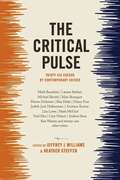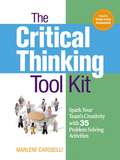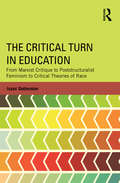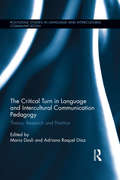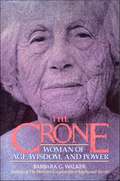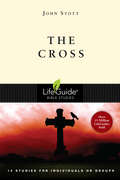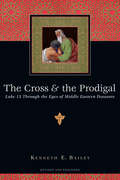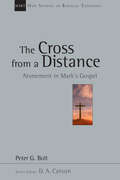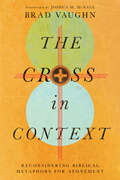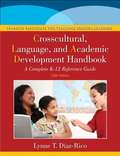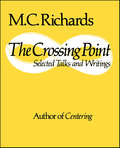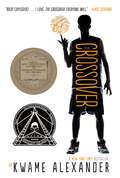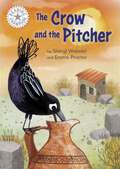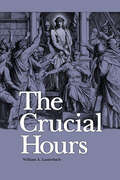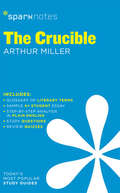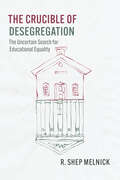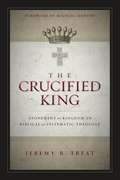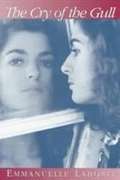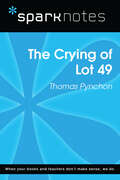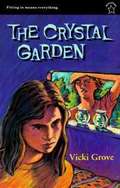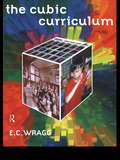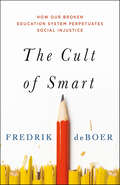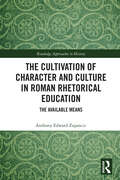- Table View
- List View
The Critical Pulse: Thirty-Six Credos by Contemporary Critics
by Jeffrey J. Williams Heather SteffenThis unprecedented anthology asks thirty-six leading literary and cultural critics to elaborate on the nature of their profession. With the humanities feeling the pinch of financial and political pressures, and its disciplines resting on increasingly uncertain conceptual ground, there couldn't be a better time for critics to reassert their widespread relevance and purpose. These credos boldly defend the function of criticism in contemporary society and showcase its vitality in the era after theory.Essays address literature and politics, with some focusing on the sorry state of higher education and others concentrating on teaching and the fate of the humanities. All reflect the critics' personal, particular experiences. Deeply personal and engaging, these stories move, amuse, and inspire, ultimately encouraging the reader to develop his or her own critical credo with which to approach the world. Reflecting on the past, looking forward to the future, and committed to the power of productive critical thought, this volume proves the value of criticism for today's skeptical audiences.Contributors: Andrew Ross, Amitava Kumar, Lisa Lowe, Vincent B. Leitch, Craig Womack, Jeffrey J. Williams, Marc Bousquet, Katie Hogan, Michelle A. Massé, John Conley, Heather Steffen, Paul Lauter, Cary Nelson, David B. Downing, Barbara Foley, Michael Bérubé, Victor Cohen, Gerald Graff, William Germano, Ann Pellegrini, Bruce Robbins, Kenneth Warren, Diana Fuss, Lauren Berlant, Toril Moi, Morris Dickstein, Rita Felski, David R. Shumway, Mark Bauerlein, Devoney Looser, Stephen Burt, Mark Greif, Kathleen Fitzpatrick, Mark McGurl, Frances Negrón-Muntaner, Judith Jack Halberstam
The Critical Thinking Tool Kit: Spark Your Team's Creativity with 35 Problem Solving Activities
by Marlene CaroselliCaroselli, an author and former workforce trainer, offers 35 problem-solving activities to help managers and trainers improve the critical thinking and problem-solving abilities of their teams. Organized by quick, creative, and analytical thinking activities, they include individual, partner, and small and large group exercises, with objectives, supplies lists, time lengths, number of participants, preparation tips, procedures, questions, and extensions. Annotation ©2011 Book News, Inc. , Portland, OR (booknews. com)
The Critical Turn in Education: From Marxist Critique to Poststructuralist Feminism to Critical Theories of Race (Critical Social Thought)
by Isaac GottesmanThe Critical Turn in Education traces the historical emergence and development of critical theories in the field of education, from the introduction of Marxist and other radical social theories in the 1960s to the contemporary critical landscape. The book begins by tracing the first waves of critical scholarship in the field through a close, contextual study of the intellectual and political projects of several core figures including, Paulo Freire, Samuel Bowles and Herbert Gintis, Michael Apple, and Henry Giroux. Later chapters offer a discussion of feminist critiques, the influx of postmodernist and poststructuralist ideas in education, and critical theories of race. While grounded in U.S. scholarship, The Critical Turn in Education contextualizes the development of critical ideas and political projects within a larger international history, and charts the ongoing theoretical debates that seek to explain the relationship between school and society. Today, much of the language of this critical turn has now become commonplace—words such as "hegemony," "ideology," and the term "critical" itself—but by providing a historical analysis, The Critical Turn in Education illuminates the complexity and nuance of these theoretical tools, which offer ways of understanding the intersections between individual identities and structural forces in an attempt to engage and overturn social injustice.
The Critical Turn in Language and Intercultural Communication Pedagogy: Theory, Research and Practice (Routledge Studies in Language and Intercultural Communication)
by Adriana Raquel Díaz Maria DasliThis edited research volume explores the development of what can be described as the ‘critical turn’ in intercultural communication pedagogy, with a particular focus on modern/foreign language education. The main aim is to trace the realisations of this critical turn against a background of unequal power relations, and to illuminate the role that radical culture educators can play in the making of a more democratic and egalitarian social order. The volume takes as a starting point the idea that criticality draws on a number of intellectual traditions, which do not always focus on social and political critique, and argues that because ideological hegemony impacts on the meanings that people create and share, intercultural communication pedagogy ought to locate itself within wider socio-political contexts. With reference points drawn from critical and transnational social theory, critical pedagogy and intercultural theory, contributors to this volume provide readers with powerful ways that show how this can be achieved, and together assess the impact that their understanding of criticality can make on modern/foreign language education. The volume is divided into three major parts, namely: ‘theorising critically’, ‘researching critically’ and ‘teaching critically’.
The Crone: Woman of Age, Wisdom, and Power
by Barbara G. WalkerA probing account of the honored place of older women in ancient matriarchal societies restores to contemporary women an energizing symbol of self-value, power, and respect.
The Cross (LifeGuide Bible Studies)
by John StottThe Cross of Christ®PDF download with a single-user license; available from InterVarsity Press and other resellers.
The Cross and the Prodigal: Luke 15 Through the Eyes of Middle Eastern Peasants
by Kenneth E. BaileyHonored in 2006 as a "Year's Best Book for Preachers" by Preaching magazine. Where is the cross in the parable of the prodigal son? For centuries, Muslims have called attention to the father's forgiveness in this parable in order to question the need for a Mediator between humanity and God. In The Cross the Prodigal, Kenneth E. Bailey--New Testament scholar and long-time missionary to the Middle East--undertakes to answer this question. Drawing on his extensive knowledge of both the New Testament and Middle Eastern culture, Bailey presents an interpretation of this parable from a Middle Eastern perspective and, in doing so, powerfully demonstrates its essentially Christian message. Here Bailey highlights the underlying tensions between law and love, servanthood and sonship, honor and forgiveness that grant this story such timeless spiritual and theological power.
The Cross from a Distance: Atonement in Mark's Gospel (New Studies in Biblical Theology #Volume 18)
by Peter G. Bolt"They brought Jesus to the place called Golgotha. . . . And they crucified him. . . . Some women were watching from a distance." (Mark 15:22, 24, 40). At the climax of Mark's Gospel, Jesus of Nazareth is put to death on a Roman cross. The text tells us that, in that lonely hour, a group of women were watching the crucifixion "from a distance." In a sense, they are given a stance toward the cross that we can share. In this exploration of Mark's Gospel, Peter G. Bolt looks at why the cross is so prominent in the narrative, asks what contribution Mark's teaching can make to our understanding of the atonement, and shows how this teaching can inform, correct and enrich our own preaching of the gospel in the contemporary world. This New Studies in Biblical Theogy volume helps us to stand in wonder before the God who has come close to us in the cross of Jesus Christ and to live in hope for the better things to come. Addressing key issues in biblical theology, the works comprising New Studies in Biblical Theology are creative attempts to help Christians better understand their Bibles. The NSBT series is edited by D. A. Carson, aiming to simultaneously instruct and to edify, to interact with current scholarship and to point the way ahead.
The Cross in Context: Reconsidering Biblical Metaphors for Atonement
by Jackson W.How can a doctrine about reconciliation with God create so much controversy among God's people?Theologian Jackson W. believes Christians can gain clarity and unity on the doctrine of the atonement through a renewed attention to the biblical evidence. While theological theories are necessary and useful, they can obscure reality as much as clarify it. And we're often ignorant of the role that cultural and historical context plays in shaping these views. Instead of beginning by comparing atonement theories, he argues, we need to delve deep into the Bible, where we find a handful of motifs that combine to form a richer, more robust theology of atonement.The Cross in ContextThe Cross in Context
The Crosscultural, Language, and Academic Development Handbook: A Complete K--12 Reference Guide (Fifth Edition)
by Lynne T. Diaz-RicoAn up-to-date edition of a bestseller, The Crosscultural, Language, and Academic Development Handbook, 5/e guides educators in promoting academic success for the culturally and linguistically diverse learners in today's classrooms. Designed specifically for mainstream classroom teachers, the book shows clearly how second-language acquisition affects learning, and presents an excellent treatment of cultural diversity and learning styles. Included is coverage of new applications for mobile learning; the Common Core Standards; Response to Intervention; English learners with autism; educating undocumented immigrants; involving family and the community to increase academic success; adapting for English learners with special needs; and more.
The Crossing Point: Selected Talks and Writings
by Mary Caroline RichardsA stunning example of poetic questioning.
The Crossing of the Visible
by James Smith Jean-Luc MarionPainting, according to Jean-Luc Marion, is a central topic of concern for philosophy, particularly phenomenology. For the question of painting is, at its heart, a question of visibility--of appearance. As such, the painting is a privileged case of the phenomenon; the painting becomes an index for investigating the conditions of appearance--or what Marion describes as "phenomenality" in general. In The Crossing of the Visible, Marion takes up just such a project. The natural outgrowth of his earlier reflections on icons, these four studies carefully consider the history of painting--from classical to contemporary--as a fund for phenomenological reflection on the conditions of (in)visibility. Ranging across artists from Raphael to Rothko, Caravaggio to Pollock, The Crossing of the Visible offers both a critique of contemporary accounts of the visual and a constructive alternative. According to Marion, the proper response to the "nihilism" of postmodernity is not iconoclasm, but rather a radically iconic account of the visual and the arts that opens them to the invisible.
The Crossover: A Basketball Novel (The Crossover Series #1)
by Kwame Alexander<P>2015 Newbery Medal Winner <P>2015 Coretta Scott King Honor Award Winner <P>"With a bolt of lightning on my kicks . . .The court is SIZZLING. My sweat is DRIZZLING. Stop all that quivering. Cuz tonight I'm delivering," announces dread-locked, 12-year old Josh Bell. <P>He and his twin brother Jordan are awesome on the court. But Josh has more than basketball in his blood, he's got mad beats, too, that tell his family's story in verse, in this fast and furious middle grade novel of family and brotherhood from Kwame Alexander. <P>Josh and Jordan must come to grips with growing up on and off the court to realize breaking the rules comes at a terrible price, as their story's heart-stopping climax proves a game-changer for the entire family. <P><b>A New York Times Bestseller</b>
The Crow and the Pitcher: Independent Reading White 10 (Reading Champion #1077)
by Sheryl WebsterThis story is part of Reading Champion, a series carefully linked to book bands to encourage independent reading skills, developed with Dr Sue Bodman and Glen Franklin of UCL Institute of Education (IOE)The Crow and the Pitcher is a retelling of an Aesop fable in which a crow must be very clever and persistent to have a drink of water.Reading Champion offers independent reading books for children to practise and reinforce their developing reading skills.Fantastic, original stories are accompanied by engaging artwork and a reading activity. Each book has been carefully graded so that it can be matched to a child's reading ability, encouraging reading for pleasure. Perfect for 5-7 year olds or those reading book band white 10.
The Crucial Hours
by William A LauterbachLearn all about the Passion History of Christ and what it means for you. Follow Jesus step-by-step on his journey to the cross in this compelling book about Christ’s Passion and the events of Holy Week. These are the Savior’s final days before the culmination of his sacrificial mission with its far-reaching and eternal results for me and you. These are the crucial hours.As you read the biblical accounts of Jesus’ suffering and death in this book, you’ll grow in your understanding and appreciation of your Savior’s redeeming love for you!The Crucial Hours includes the entire Passion History and the Bible verses of the gospels from which it is drawn using the beautiful and familiar language of the King James Version (KJV).
The Crucible SparkNotes Literature Guide (SparkNotes Literature Guide Series #24)
by SparkNotesThe Crucible SparkNotes Literature Guide by Arthur Miller Making the reading experience fun! When a paper is due, and dreaded exams loom, here's the lit-crit help students need to succeed! SparkNotes Literature Guides make studying smarter, better, and faster. They provide chapter-by-chapter analysis; explanations of key themes, motifs, and symbols; a review quiz; and essay topics. Lively and accessible, SparkNotes is perfect for late-night studying and paper writing. Includes:An A+ Essay—an actual literary essay written about the Spark-ed book—to show students how a paper should be written.16 pages devoted to writing a literary essay including: a glossary of literary termsStep-by-step tutoring on how to write a literary essayA feature on how not to plagiarize
The Crucible of Desegregation: The Uncertain Search for Educational Equality (Chicago Series in Law and Society)
by R. Shep MelnickExamines the patchwork evolution of school desegregation policy. In 1954, the Supreme Court delivered the landmark decision of Brown v. Board of Education—establishing the right to attend a desegregated school as a national constitutional right—but the decision contained fundamental ambiguities. The Supreme Court has never offered a clear definition of what desegregation means or laid out a framework for evaluating competing interpretations. In The Crucible of Desegregation, R. Shep Melnick examines the evolution of federal school desegregation policy from 1954 through the termination of desegregation orders in the first decades of the twenty-first century, combining legal analysis with a focus on institutional relations, particularly the interactions between federal judges and administrators. Melnick argues that years of ambiguous, inconsistent, and meandering Court decisions left lower court judges adrift, forced to apply contradictory Supreme Court precedents in a wide variety of highly charged political and educational contexts. As a result, desegregation policy has been a patchwork, with lower court judges playing a crucial role and with little opportunity to analyze what worked and what didn’t. The Crucible of Desegregation reveals persistent patterns and disagreements that continue to roil education policy.
The Crucified King: Atonement and Kingdom in Biblical and Systematic Theology
by Jeremy R. Treat Michael HortonThe kingdom of God and the atonement are two of the most important themes in all of Scripture. Tragically, theologians have often either set the two at odds or focused on one to the complete neglect of the other. In The Crucified King, Jeremy Treat demonstrates that Scripture presents a mutually enriching relationship between the kingdom and atonement that draws significantly from the story of Israel and culminates in the crucifixion of Christ the king. As Israel’s messiah, he holds together the kingdom and the cross by bringing God’s reign on earth through his atoning death. The kingdom is the ultimate goal of the cross, and the cross is the means by which the kingdom comes. Jesus’ death is not the failure of his messianic ministry, nor simply the prelude to his royal glory, but is the apex of his kingdom mission. The cross is the throne from which he rules and establishes his kingdom. Using a holistic approach that brings together the insights of biblical and systematic theology, this book demonstrates not only that the kingdom and the cross are inseparable, but how they are integrated in Scripture and theology.
The Cry of the Gull
by Emmanuelle Laborit Constantina Mitchell Paul Raymond CoteA memoir by a deaf, French actress who starred in the French production of Children of a Lesser God.
The Crying of Lot 49 (SparkNotes Literature Guide Series)
by SparkNotesThe Crying of Lot 49 (SparkNotes Literature Guide) by Thomas Pynchon Making the reading experience fun! Created by Harvard students for students everywhere, SparkNotes is a new breed of study guide: smarter, better, faster.Geared to what today's students need to know, SparkNotes provides:chapter-by-chapter analysis explanations of key themes, motifs, and symbols a review quiz and essay topics Lively and accessible, these guides are perfect for late-night studying and writing papers.
The Crystal Garden
by Vicki Grove[From the back cover:] "Isn't being friends with the right people the most important part of junior high? Eliza wants life in her new town to be different. No one knows what she was like before she came, so if she acts like the popular kids maybe she'll make herself fit in. But the first friend she makes is her neighbor Dierdre, a loner whose family has even more problems than Eliza's. Then school starts and Eliza's plan begins to work. As she gets noticed by Amanda, Casey and Lauren, she leaves Dierdre behind. Now that Eliza finally has what she wants, is she willing to give it all up when tragedy strikes and Dierdre really needs her?"
The Crystallizing Teacher: Revelations of Whiteness in Schools Through Freirean Critical Reflective Practice (Palgrave Critical Perspectives on Schooling, Teachers and Teaching)
by Craig WoodThis book advocates for teacher professional development done differently. The author introduces a process described as ‘crystallizing conscientização’, which restores agency to teachers. Looking beyond incremental improvements in teacher micro-skills promoted by neo-managerial approaches to professional development, the book considers the wider impact of teachers’ personal, professional and political identities on their work. This critical reflective practice combines crystallization as method with Freirean principles of conscientização, asking questions that reveal the impact of whiteness in schools and the role that education performs in replicating whiteness and perpetuating injustice. The book will appeal to academics in the diverse fields of sociology of education, critical race theory, critical whiteness studies, curriculum and pedagogy and teachers’ work, as well as providers of initial teacher education programs and pre-service teachers.
The Cubic Curriculum
by Ted WraggTed Wragg offers a novel and highly imaginative view of the school curriculum, using a unique three-dimensional model.
The Cult of Smart: How Our Broken Education System Perpetuates Social Injustice
by Fredrik deBoerNamed one of Vulture’s Top 10 Best Books of 2020!Leftist firebrand Fredrik deBoer exposes the lie at the heart of our educational system and demands top-to-bottom reform.Everyone agrees that education is the key to creating a more just and equal world, and that our schools are broken and failing. Proposed reforms variously target incompetent teachers, corrupt union practices, or outdated curricula, but no one acknowledges a scientifically-proven fact that we all understand intuitively: Academic potential varies between individuals, and cannot be dramatically improved. In The Cult of Smart, educator and outspoken leftist Fredrik deBoer exposes this omission as the central flaw of our entire society, which has created and perpetuated an unjust class structure based on intellectual ability.Since cognitive talent varies from person to person, our education system can never create equal opportunity for all. Instead, it teaches our children that hierarchy and competition are natural, and that human value should be based on intelligence. These ideas are counter to everything that the left believes, but until they acknowledge the existence of individual cognitive differences, progressives remain complicit in keeping the status quo in place.This passionate, voice-driven manifesto demands that we embrace a new goal for education: equality of outcomes. We must create a world that has a place for everyone, not just the academically talented. But we’ll never achieve this dream until the Cult of Smart is destroyed.
The Cultivation of Character and Culture in Roman Rhetorical Education: The Available Means (Routledge Approaches to History)
by Anthony Edward ZupancicAt its very center, The Cultivation of Character and Culture in Roman Rhetorical Education: The Available Means is a study of the subtle, organic ways that rhetoric can work to cultivate a particular character. This is an extension of the current work in composition studies, which focus on the ways that writing instruction contributes to the development of individual power and agency in students, combined with an ancient understanding of the ways that students learned to act within a particular, accepted cultural framework. It recognizes and reclaims a lost dimension of rhetoric, a dimension that is conceptually linked to the martial culture of the ancient world, to show how ancient rhetorical theory framed the discipline as an education in thinking, speaking, and acting in ways that were necessary to be both a persuasive speaker and an effective leader. Through close readings and analysis of particular rhetorical exercises, the book shows how rhetorical education shaped characters that were appropriate in the eyes of the dominant culture but were also capable of working independently to progressively alter that culture. In showing the ways that rhetorical education shaped a particular character, the book demonstrates the ways that the combination character, culture, and virtue are vital to leadership in any time.
